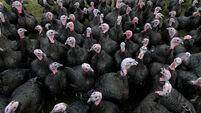Beef farmers take heart as fortunes turn in their favour

Agriculture Minister Coveney’s visit to the USA coincided with the announcement by ABP of a contract with Sysco worth up to €15m.
The general air of positivity around the minister’s visit is best summed up by the sudden realisation that import tariff rate quotas may be actually too restrictive from an Irish point of view.










